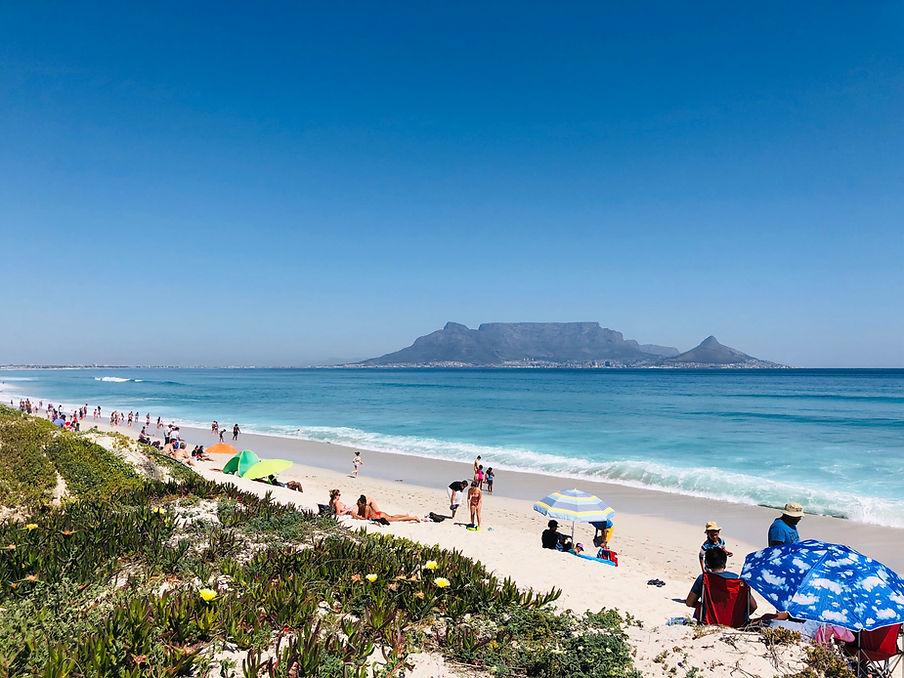The Cape & Africa
Discovered

South Africa
Bespoke Inspirational Authentic Unforgettable
"Experience A World in One Country"
South Africa's Rainbow Nation offers some of the most diverse experiences in the whole of Africa - ranging from great wildlife, thrilling adventure sports, stunning natural scenery, highly rated gastronomic cuisine and abundant, first class shopping.
Cradled by two oceans, the Atlantic and Indian, it comes as no surprise that one side of the country is both geographically and scenically entirely different than the other and boasts an astounding variety of ecosystems; subtropical savannah, arid scrubland and deserts. Its mountain ranges consist of rugged peaks and, of course, the world famous Table Mountain.
This truly is "A World in One Country".
Covering about 4% of Africa's land surface, South Africa lies at the southern tip of the continent; it is a country that is rich in natural beauty, a wide diversity of wild animals, bustling cities, highly rated gastronomic cuisine and wine offerings and a varied series of landscapes. It comes as no surprise that one side of the country is both geographically and scenically entirely different than the other. The country's far southwestern corner, including Cape Town and surroundings, is climatically and botanically unique.
Inland, a high-altitude central plateau stands surrounded by a rim of mountains, which are particularly impressive in KwaZulu-Natal's Drakensberg mountains.
In the south, the coastal plain is either very narrow or even non-existent, with sharp cliffs often plunging dagger-like into the sea. In the east, the lowlands are more extensive, most notably in the warm lowveld that hosts Kruger National Park and its rich wildlife. The Orange river is the country's longest; it rises in Lesotho and meanders some 2,300 kms west to eventually spill into the Atlantic Ocean. A number of other large rivers drain to the east, washing into the Indian Ocean. These are predominantly the Limpopo, Olifants, Sabi, Komati, Umfolozi, Tugela and Kei.

Highlights
-
The perfect destination for a ‘combination vacation' of wildlife, beaches, shopping, gastronomy and art.
-
Experience Africa’s Big 5 (lion, leopard, elephant, buffalo, and rhino) on a safari in the Kruger National Park.
-
Marvel at the grandeur of mighty Table Mountain in Cape Town.
-
Work on your tan on a tranquil beach getaway along the gorgeous Garden Route or the more rugged West Coast - a true hidden gem.
-
Indulge your inner foodie at the award-winning wineries and restaurants of the Cape Winelands.
-
Malaria -free safaris

South Africa's Wildlife Areas
Reflecting its diverse and distinctive geographical, altitudinal and climatic zones, South Africa supports a great variety of flora and fauna.
More than 10% of the world's plants and flowers occur in South Africa, along with virtually all of Africa's great land mammals, although the more spectacular wildlife is found predominantly in the eastern lowlands.
South Africa is home to about 90% of the endangered white rhinoceros population.
Whales, dolphins sharks, penguins and a number of other marine species are found in the oceans that cradle the country's coastline. And, as a plus, a lot of land has been restored from commercial farmland to nature reserves where animals have been reintroduced that were formerly hunted to local extinction. The epic white rhinoceros probably constitutes the country's foremost conservation success.
Birdlife is outstanding throughout South Africa. The country hosts about 800 species, including 600 breeding species, Eurasian migrants and seabirds. A good number of bird species are endemic to South Africa, particularly in the Karoo, high veld grasslands and Cape fynbos regions, making this a highly popular destination among international birdwatchers.
Reptiles, frogs and other life forms are equally well represented.
The Cape fynbos region is home to an astonishing 8,500 plant species and is considered to be one of the world's 8 floristic regions. The plants in this winter rainfall area are characterised by relatively small leaves and include many varieties of erica and protea.
Although the Karoo region consists of semi-arid scrubland, it is a botanist's dream owing to its astonishing number of hardy and succulent plants.
The much-celebrated Namaqualand region is renowned for its springtime displays of colourful wildflowers from late August to early September.
True forests are sparse in South Africa; only small patches occur along the southern coast near Knysna (which to this day contain a very small population of very elusive wild roaming elephants), the Transkei, along the Northern KwaZulu-Natal coast and in the eastern escarpment. Acacia, combretum and mopane dominate the sub-tropical lowlands, with taller evergreen trees along rivers and watercourses.
South Africa has an excellent network of protected areas. With more than 700 publicly owned reserves, including 19 national parks, these constitute about 6 % of the land surface. In addition, there are about 200 private game and wildlife reserves. The Kruger National Park is the largest, and probably the most famous park. Together with the second largest, the Kgalagadi Transfortier Park, these account for about 40% of the total protected area. In comparison, most other national parks, reserves and sanctuaries are quite small.
The Greater Kruger consists of Kruger National Park and a significant number of private game reserves and concession areas that offer some of the best wildlife sightings in the country along with premier accommodation and superb food.
